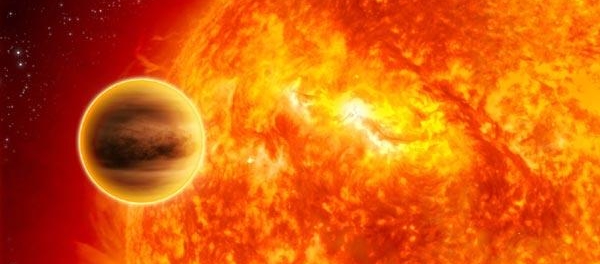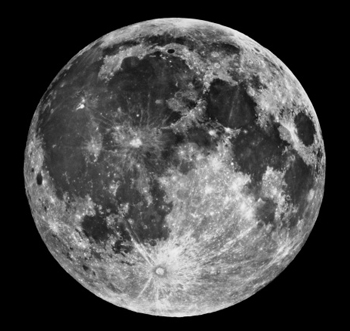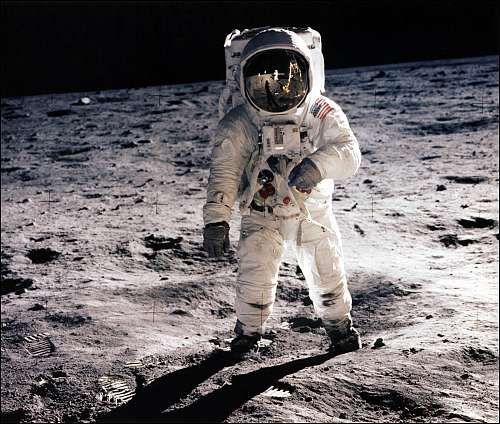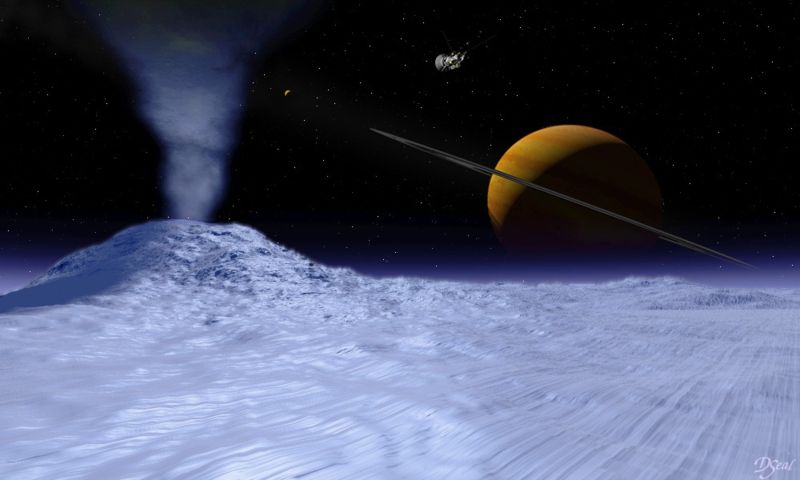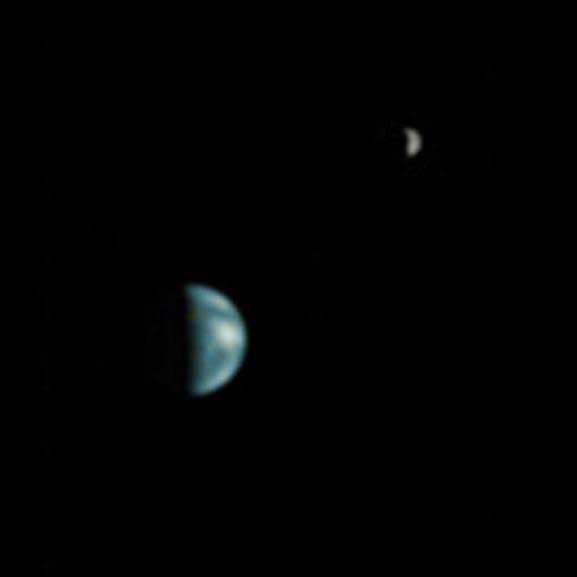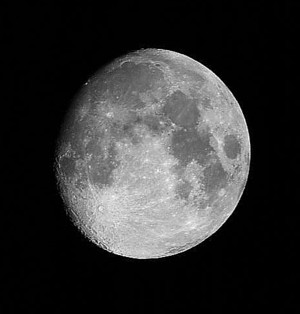[/caption]
Planets approximately the size of Jupiter orbiting close to their star in other systems are often referred to as “Hot Jupiters.” It would appear that a new classification is required: Very Hot and Very Fast Jupiters. WASP-12b is an exoplanet, about 50% more massive than Jupiter, orbiting a star (imaginatively called WASP-12) over 800 light years away, but it isn’t any ordinary exoplanet. It orbits its host star 1/40th of the distance at which the Earth orbits the Sun and it takes a breathtaking one day to complete one orbit. As a consequence, its host star heats WASP-12b to record-breaking temperatures; the planet is being toasted up to 2250 °C. For an exoplanet of this size, to be orbiting so close to a star has caused a stir amongst planet hunters. WASP-12b is and oddity, there’s nothing else like it… so far.
This new discovery originates from the UK’s Wide Area Search for Planets, a.k.a. “SuperWASP”. SuperWASP is a robotic system surveying both hemispheres, consisting of two observatories (one in the Canary Islands, off the coast of Africa, called SuperWASP-North; one in South Africa called SuperWASP-South) with eight cameras in both. The north and south observatories are on the look out for extrasolar planets, but rather than focusing on one star and seeing whether it wobbles (thereby giving away the presence of the gravitational pull of an orbiting planet), SuperWASP looks out for the periodic dimming of stars as their companion planets pass in front of them. Since it began operations in 2004, the two observatories have found 15 transiting exoplanets (as of April 2008).
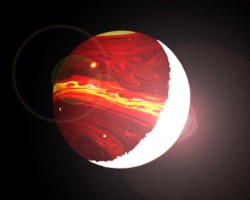
Although impressive, there may be hotter “Hot Jupiters” out there, but the orbital velocity of WASP-12b will be a tougher record to beat. To date, most Jupiter-sized exoplanets have orbital periods of a few days, which led astronomers to believe there was some planetary mechanism preventing these planets from migrating very close to their host stars. Although Jupiter-like planets will have formed further away from their stars, they drift closer as they evolve until they settle into a stable orbit. Usually these orbits are located far away from the star, but WASP-12b obviously didn’t read the rule book before it set up home in its stellar oven.
“When the planets form and migrate inward, something is causing them to stop and preferentially stop with a period of three days,” said Leslie Hebb of the University of St Andrews, UK. “I was surprised that the period could be so much shorter.”
So WASP-12b has a strange orbit, making it orbit very fast, causing it to be heated to astounding temperatures. But the strangeness doesn’t stop there. It has a diameter 1.8 times that of Jupiter, far bigger than gas giants are thought to grow. However, the extreme temperatures WASP-12b is experiencing may explain its obesity problem – the star could be causing the planet to “puff up,” making the gas giant less dense, but blowing it 80% larger than Jupiter proportions.
Now, SuperWASP researchers hope to probe the planetary system for UV light radiating from the exoplanet, possibly showing evidence that WASP-12b’s atmosphere is undergoing aggressive stripping or evaporation at such close proximity to the host star.
Source: New Scientist

